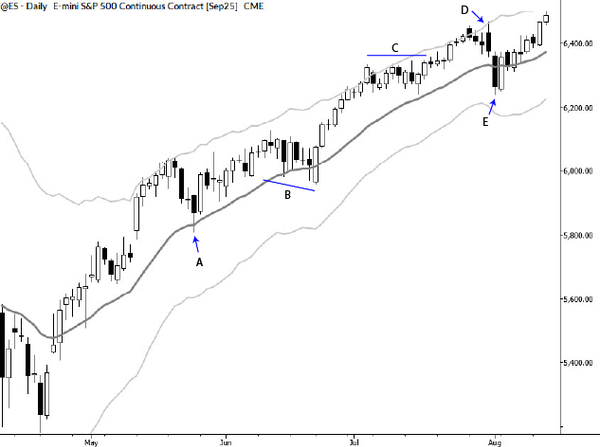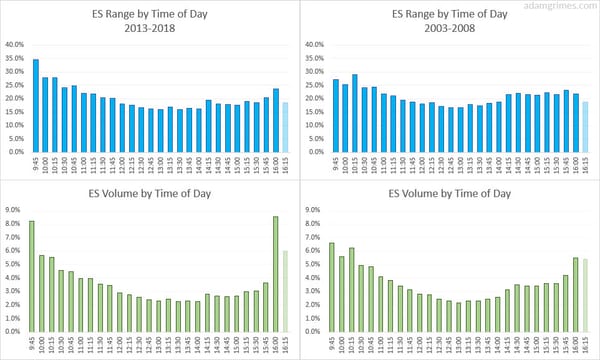Tracking the Economy: a scorecard

As I said in my recent post, I’ll be focusing a bit more on fundamental and macroeconomic factors over the next few months. Every week, we hear some (or many!) news stories about some economic indicator or number. My goal is to help you understand what it all means.
Let’s start today with a process.
Tracking data
If you want to understand something that changes, one of the best ways to grow your understanding is to record regular observations. That’s simple, but it’s important: look at the thing, and write it down.
For developing traders, I have always suggested recording prices by hand. There are several ways to do this, and all of these are helpful at different times in a trader’s development:
- Pick a handful of markets and write prices down at regular intervals. Even just daily closing prices will get you started.
- Do the same, but keep it in a spreadsheet.
- Pick a small number of markets, and draw charts by hand.
It’s interesting to see reactions to this in online forums. It’s not unusual to see someone say this is a waste of time because you can chart everything online. You can be fairly certain that the person pontificating in an online forum, telling you that this is a waste of time, does not have the experience or skills to make this judgement.
On the other hand, I have hundreds of emails from traders who say that this simple practice has transformed their trading. (And some of these traders have decades of experience and move significant size…) Personally, whenever I’m feeling out of touch with markets, I return to this simple practice and find immediate reconnection.
So… if you want to understand how prices move, write prices down (on paper or electronically). But how can we do the same with economic data?
Tracking the Economy
Most economic data is less frequent. Most datapoints are released once a month. The more frequent are released once a week. (There are some daily reports, but most of these are more accurately market data: interest rates, interest rate spreads, etc.)
This is both good and bad. It’s good because your task of tracking those numbers is simple. If you want to track jobless numbers, you write them down once a week. Easy.
But it’s bad because you don’t actually see that much data. If you write down a whole year of GDP numbers, you only really see 4 numbers. (GDP is released every month, but there are two estimates released before each final. Oh, and past numbers can be revised as well, sometimes quite a lot.)
So, you will have to work to know the history of the data series, what it means, and how it has changed in the past. (There are also many little “gotchas” to learn too.)
Knowing what’s coming
These economic numbers are released on a schedule that is known far in advance. Many online calendars (here and here) aggregate these numbers. Most brokers also maintain a calendar.
You will also need to do a bit of work to know how important each number is. Some numbers have the power to move the market, but others are almost always ignored. Why are they ignored? There can be many reasons: sometimes they are just not that significant. Sometimes the numbers are estimates of previous numbers or inputs into other reports. Sometimes they are anticlimactic because they are simply echoing a previous number.
And, of course, surprises happen. A number that has never moved the market might, in a perfect storm scenario, cause a pretty big splash.
But having a good sense of what the major movers are likely to be, watching those numbers, and tracking them is a very good place to start.
Keep a scorecard
About four years ago I realized I needed to structure my reading of economic indicators a bit better. I’d always tracked the important datapoints, but I did so in several different formats that lacked consistent structure.
I created the scorecard format at the top of this post. (And recently started sharing my raw “homework” with my Talon Advisors clients.)
The scorecard forces you to 1) notice and 2) evaluate each datapoint. Doing so, over time, adds a layer of richness and understanding to your analysis that you can’t really get any other way.
Notice what is in this scorecard:
- A list of the important things to watch.
- Whether the raw number increased or decreased.
- How that change related to expectations.
- How significant this particular report is likely to be for the economy, and the direction of that impact.
- Whether or not this release was a surprise. (Highlighted yellow if so.)
Adapt this for yourself
You can take this concept and extend it in many ways. Maybe staying on top of the Economy isn’t that relevant to your trading style.
Well, how about this?
- If you trade stocks, keep track of earnings reports in a similar format. You might also record the size of the move that follows…
- Could you adapt a format like this for technical factors and score your setups?
- How about tracking very simple aspects of your personal performance?
- Could you track other things you are trying to change in your life? Diet? Exercise? Reading? Meditation?
The scorecard format can be expanded and adapted to do many things, but I thought I would share the raw structure here. Think about what you can do with this. What can you change to make it work for you?



